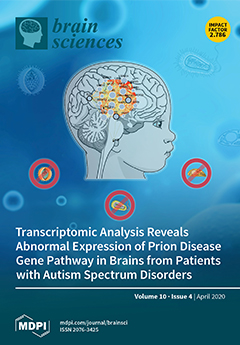This study aimed to examine the effects of single-session anodal high-definition transcranial direct current stimulation (HD-tDCS) on the strength of intrinsic foot muscles, passive ankle kinesthesia, and static balance. Methods: In this double-blinded self-controlled study, 14 healthy younger adults were asked to complete
[...] Read more.
This study aimed to examine the effects of single-session anodal high-definition transcranial direct current stimulation (HD-tDCS) on the strength of intrinsic foot muscles, passive ankle kinesthesia, and static balance. Methods: In this double-blinded self-controlled study, 14 healthy younger adults were asked to complete assessments of foot muscle strength, passive ankle kinesthesia, and static balance before and after a 20-minute session of either HD-tDCS or sham stimulation (i.e., control) at two visits separated by one week. Two-way repeated-measures analysis of variance was used to examine the effects of HD-tDCS on metatarsophalangeal joint flexor strength, toe flexor strength, the passive kinesthesia threshold of ankle joint, and the average sway velocity of the center of gravity. Results: All participants completed all study procedures and no side effects nor risk events were reported. Blinding was shown to be successful, with an overall accuracy of 35.7% in the guess of stimulation type (
p = 0.347). No main effects of intervention, time, or their interaction were observed for foot muscle strength (
p > 0.05). The average percent change in first-toe flexor strength following anodal HD-tDCS was 12.8 ± 24.2%, with 11 out of 14 participants showing an increase in strength, while the change following sham stimulation was 0.7 ± 17.3%, with 8 out of 14 participants showing an increase in strength. A main effect of time on the passive kinesthesia threshold of ankle inversion, dorsiflexion, and anteroposterior and medial–lateral average sway velocity of the center of gravity in one-leg standing with eyes closed was observed; these outcomes were reduced from pre to post stimulation (
p < 0.05). No significant differences were observed for other variables between the two stimulation types. Conclusion: The results of this pilot study suggested that single-session HD-tDCS may improve the flexor strength of the first toe, although no statistically significant differences were observed between the anodal HD-tDCS and sham procedure groups. Additionally, passive ankle kinesthesia and static standing balance performance were improved from pre to post stimulation, but no significant differences were observed between the HD-tDCS and sham procedure groups. This may be potentially due to ceiling effects in this healthy cohort of a small sample size. Nevertheless, these preliminary findings may provide critical knowledge of optimal stimulation parameters, effect size, and power estimation of HD-tDCS for future trials aiming to confirm and expand the findings of this pilot study.
Full article






